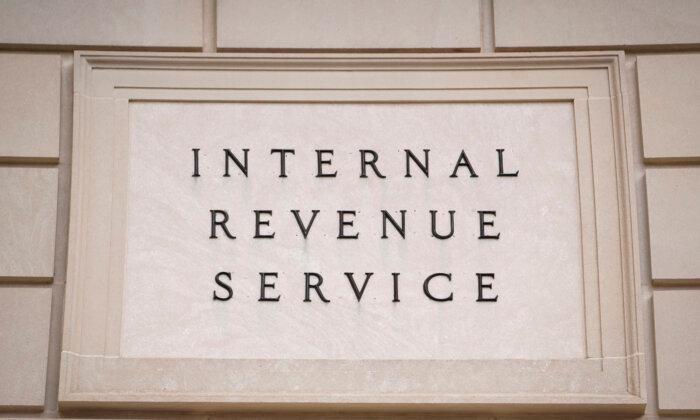Americans can look forward to potentially paying lower taxes and benefit from higher paychecks this year due to some of the changes implemented by the Internal Revenue Service (IRS).
Income Tax Brackets and Standard Deductions
While tax rates are kept unchanged, the IRS has raised the income level on which such taxes will be charged in 2024:- The lowest 10 percent taxes will apply to individuals making $11,600 or less annually, up $600 from $11,000 in 2023. For married couples filing jointly, the income limit is $23,200, up $1,200 from last year.
- The 12 percent rate is applicable to individuals making $11,601 up to a maximum of $47,150, a $2,425 increase from $44,725. For married couples filing jointly, the income limit is $94,300, up $4,850 from last year.
- The 22 percent rate is applicable to individuals making $47,151 up to a maximum of $100,525, rising $5,150 from $95,375. For married couples filing jointly, the income limit is $201,050, up $10,300 from last year.
- The 24 percent rate is applicable to individuals making $100,526 up to a maximum of $191,950, an increase of $9,850 from $182,100. For married couples filing jointly, the income limit is $383,900, up $19,700 from last year.
- The 32 percent rate is applicable to individuals making $191,951 up to a maximum of $243,725, a $12,475 jump from $231,250. For married couples filing jointly, the income limit is $487,450, up $24,950 from last year.
- The 35 percent rate is applicable to individuals making $243,726 up to a maximum of $609,350, which is higher by $31,225 from $578,125. For married couples filing jointly, the income limit is $731,200, up $37,450 from last year.
- The highest 37 percent rate is applicable to individuals making more than $609,350. For married couples filing jointly, the rate is for incomes more than $731,200.
The IRS has raised the exemption under alternative minimum tax (AMT) from $81,300 to $85,700. Beyond this threshold, certain higher income individuals will be subject to AMT, a separate tax scheme. For married couples filing jointly, AMT exemption has been raised to $133,300.
AMT exemptions will start to phase out when individual filers make over $609,350 or married couples make more than $1,218,700.
Standard deduction is the portion of the annual income that is not subject to taxes and can thereby reduce the overall bill. The deductions are for taxpayers who do not itemize their deductions using Schedule A of Form 1040 while calculating taxable income.
401(k), IRA Contribution Limits
Contribution limit for plans like 401(k) and individual retirement accounts (IRA) were raised by $500 for the 2024 tax year.“The contribution limit for employees who participate in 401(k), 403(b), and most 457 plans, as well as the federal government’s Thrift Savings Plan, is increased to $23,000, up from $22,500,” the agency said in November. “The limit on annual contributions to an IRA increased to $7,000, up from $6,500.”
The $500 increase can allow taxpayers to pay less taxes. For 401(k) accounts, contributions are taken from an employee’s salary prior to taxation. As such, a larger contribution limit would mean that the employee can contribute more tax-free money to build up their retirement fund. In addition, by contributing $500 more to a 401(k) account, a person can also lower their taxable income.
For IRA accounts, the extra contribution will grow tax-free. As to reducing the contribution from taxes, the IRS may allow such deduction to a traditional IRS provided the taxpayer meets “certain conditions.”
“If during the year, either the taxpayer or the taxpayer’s spouse was covered by a retirement plan at work, the deduction may be reduced, or phased out, until it is eliminated, depending on filing status and income,” the agency stated.
- For single taxpayers covered by a workplace retirement plan, the phase-out range has been raised to $77,000–87,000, up from $73,000–83,000—an increase of $4,000.
- For married couples filing jointly, if the spouse making the IRA contribution is covered by a workplace retirement plan, the phase-out range next year will be $123,000—143,000, up from between $116,000 and $136,000—an increase of $7,000.
- For an IRA contributor who is not covered by a workplace retirement plan and is married to someone who is covered, the phase-out range is set to be between $230,000 and $240,000, up from a range of $218,000–228,000—an increase of $12,000.
- For a married individual filing a separate return who is covered by a workplace retirement plan, the phase-out range will remain unchanged between $0 and $10,000.
FSA Contributions
The flexible spending arrangement (FSA) is a type of savings account that employees use to pay for medical expenses. Contributions from the account are deducted from the taxpayer’s wages.FSAs can be used to meet expenses like copayments, prescription medications, menstrual products, dental care, and over-the-counter drugs that may not be covered by an employee’s health plans. Amounts contributed to the FSA are also not subject to federal income tax, Medicare tax, or Social Security tax.
“For 2024, there is a $150 increase to the contribution limit for these accounts,” the IRS announced in December. “An employee who chooses to participate in an FSA can contribute up to $3,200 through payroll deductions during the 2024 plan year.” The contribution limit for 2023 was $3,050.
If the individual fails to fully utilize the amount in the account during that specific year, the entire amount, except for a small portion, would expire.
Other Benefits
Some taxpayers claim Earned Income Tax Credit (EITC), a refundable tax credit to workers making low or moderate income.The IRS raised the minimum amount that households can claim EITC for tax year 2024 by $400 to $7,830, provided they have at least three qualifying children. In 2023, the amount was $7,430.
In 2020, only just above $2,000 was claimed as EITC on average. Around 20 percent of taxpayers who were qualified to claim it failed to do so.
People who typically overlook such credits include, veterans, self-employed, individuals living in rural areas, people whose earnings have decreased, and those who live in nontraditional homes like grandparents raising grandchildren.
The IRS has also raised deductibles and out-of-pocket expense limits on medical savings accounts (MSA) for the 2024 tax year.
For self-only coverage, maximum out-of-pocket expense was bumped to $5,550 and the deductible range to $2,800–4,150. For family coverage, the out-of-pocket was increased to $10,200 and deductible to a range of $5,550–8,350.
Americans who earn money in another country use the foreign earned income exclusion provision to prevent double taxation. For the 2024 tax year, the exclusion has been raised to $126,500, up from $120,000 in 2023.
For self-employed individuals, IRS allows deducting the cost of operating vehicles for their business activities. The deduction is typically done using the “standard mileage rate”—the rate per mile that the IRS sets for calculating business travel costs.
Crackdown on Taxpayers
While the IRS has taken several steps to benefit taxpayers, some of its actions have come under intense criticism as it potentially impacts a large portion of American citizens.Last year, the IRS watchdog Treasury Inspector General for Tax Administration (TIGTA) criticized the agency for not having a clear definition of “high-income” earners amid its rising enforcement efforts.
The IRS uses a decades-old definition of high income, which classifies any income above $200,000 as high, TIGTA pointed out.
“This amount is equivalent to more than $1 million in 2023, but the IRS still uses $200,000 as the default high-income threshold,” TIGTA said. This is “no longer a reasonable standard for high earners given inflation since 2005.”
The IRS’s strengthening enforcement efforts come due to billions of dollars in funds set aside by the Inflation Reduction Act. Republicans have warned that the agency could use this to hire an “army” of tax enforcers, leading to an increase in tax audits of ordinary Americans.
In September, the IRS announced hiring 3,700 people to assist with “expanded enforcement work,” including on high-income earners.
Republicans have also accused the IRS of conducting politically motivated audits of a conservative watchdog that is already tax-exempt.
The organization, American Accountability Foundation (AAF), is a nonprofit that the IRS examined for its 501(c)(3) tax-exempt status. The agency demanded that AAF submit documents, including communications.
AAF President Tom Jones blamed the IRS action as retaliation for the organization’s efforts to highlight some of the radical viewpoints of President Joe Biden’s administrative nominees.
“It’s a deliberate attempt to punish and suppress AAF’s activities. It is surely no coincidence that AAF—the very organization that exposed the weaponization of the IRS—is now the target of it,” he said in a statement.
Sen. J.D. Vance (R-Ohio) and Sen. Mike Braun (R-Ind.) wrote a letter to IRS Commissioner Danny Werfel, asking for an explanation for the agency’s actions.







